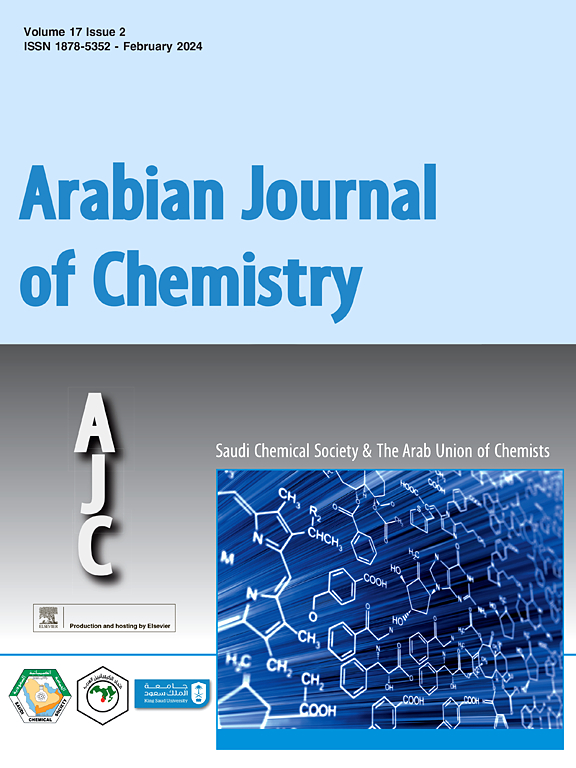In vivo wound healing activity of electrospun nanofibers embedding natural products
IF 5.2
2区 化学
Q2 CHEMISTRY, MULTIDISCIPLINARY
引用次数: 0
Abstract
Nanofibers are threads at the nanometric scale. Electrospinning is a technique that uses electric fields as the driving force to produce fibers ranging from nanometers to micrometers. Membranes based on polymeric nanofibers obtained through electrospinning possess an excellent capacity to carry drugs and natural active components, promoting skin healing and regeneration in various ways. Natural products derived from plants have gained attention in recent decades due to their accessibility, good biocompatibility, biodegradability, and incorporation into nanofibers. These products can influence multiple stages of the healing process and exhibit antimicrobial activity, thereby preventing and combating infections. Consequently, the combination of natural products and nanofibers presents a promising approach to infection prevention and skin wound healing. In this context, the current paper presents a systematic literature review of studies conducted from 2011 to 2024. It focuses on articles concerning the production of nanofibers via electrospinning that embed active components of natural origin, specifically those that performed in vivo tests to assess wound healing potential. A total of 26 articles met the inclusion criteria and were analyzed in terms of production and characterization of the electrospun membranes using in vitro and in vivo tests. Most studies employed a mixture of polyvinyl alcohol (PVA) with another polymer, utilized plant extracts like Malva sylvestris as active components, and performed in vitro tests using fibroblasts. Antimicrobial tests were conducted against Staphylococcus aureus and Escherichia coli, while male Wistar rats were used in excision/incision wound models for in vivo tests. The results indicate that natural products influence the properties of the scaffolds in different ways, such as increasing fiber diameter and mechanical strength, and may also accelerate wound healing.

嵌入天然产品的电纺纳米纤维的体内伤口愈合活性
纳米纤维是纳米尺度的线。电纺丝是一种以电场为驱动力生产纳米到微米纤维的技术。通过电纺丝技术获得的基于聚合物纳米纤维的薄膜具有出色的承载药物和天然活性成分的能力,能以各种方式促进皮肤愈合和再生。近几十年来,从植物中提取的天然产品因其易得性、良好的生物相容性、生物可降解性以及可融入纳米纤维而备受关注。这些产品可以影响愈合过程的多个阶段,并具有抗菌活性,从而预防和抗击感染。因此,天然产品与纳米纤维的结合为预防感染和皮肤伤口愈合提供了一种前景广阔的方法。在此背景下,本文对 2011 年至 2024 年期间进行的研究进行了系统的文献综述。本文重点研究了通过电纺丝技术生产纳米纤维并嵌入天然活性成分的相关文章,特别是那些进行体内测试以评估伤口愈合潜力的文章。共有 26 篇文章符合纳入标准,并通过体外和体内测试对电纺丝膜的生产和特性进行了分析。大多数研究采用了聚乙烯醇(PVA)与另一种聚合物的混合物,利用锦葵等植物提取物作为活性成分,并使用成纤维细胞进行了体外测试。对金黄色葡萄球菌和大肠杆菌进行了抗菌测试,并使用雄性 Wistar 大鼠的切除/切口伤口模型进行了体内测试。结果表明,天然产品会以不同的方式影响支架的特性,如增加纤维直径和机械强度,还可能加速伤口愈合。
本文章由计算机程序翻译,如有差异,请以英文原文为准。
求助全文
约1分钟内获得全文
求助全文
来源期刊

Arabian Journal of Chemistry
CHEMISTRY, MULTIDISCIPLINARY-
CiteScore
10.80
自引率
3.30%
发文量
763
审稿时长
63 days
期刊介绍:
The Arabian Journal of Chemistry is an English language, peer-reviewed scholarly publication in the area of chemistry. The Arabian Journal of Chemistry publishes original papers, reviews and short reports on, but not limited to: inorganic, physical, organic, analytical and biochemistry.
The Arabian Journal of Chemistry is issued by the Arab Union of Chemists and is published by King Saud University together with the Saudi Chemical Society in collaboration with Elsevier and is edited by an international group of eminent researchers.
 求助内容:
求助内容: 应助结果提醒方式:
应助结果提醒方式:


